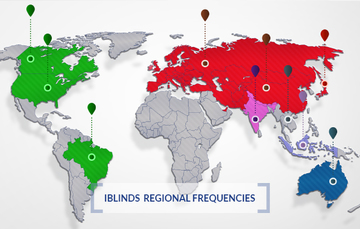Compatibility
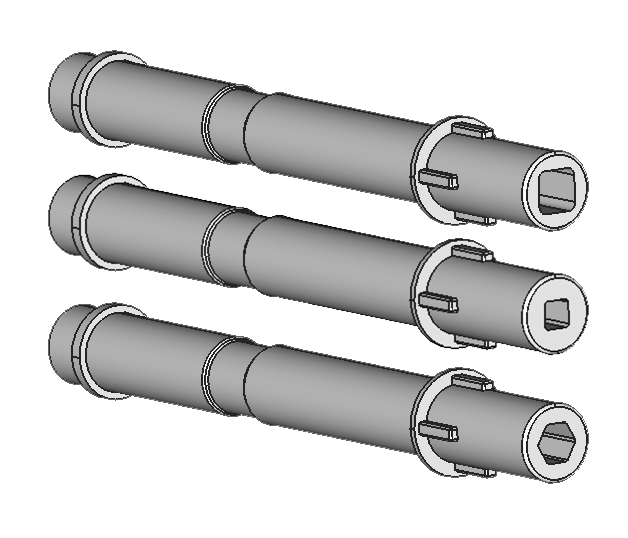
We currently only support the above tilt shafts, the Large Square, Small Square, and Hex tilt shafts. However, we may expand support for more tilt shafts in the future.
You can determine which iblinds version you have by looking at the sticker on the bottom of the iblinds, on the box, or inspecting visual cues. Please use our Version Identification page for more details.

Yes. A Z-wave compatible smart home hub is required to operate iblinds.
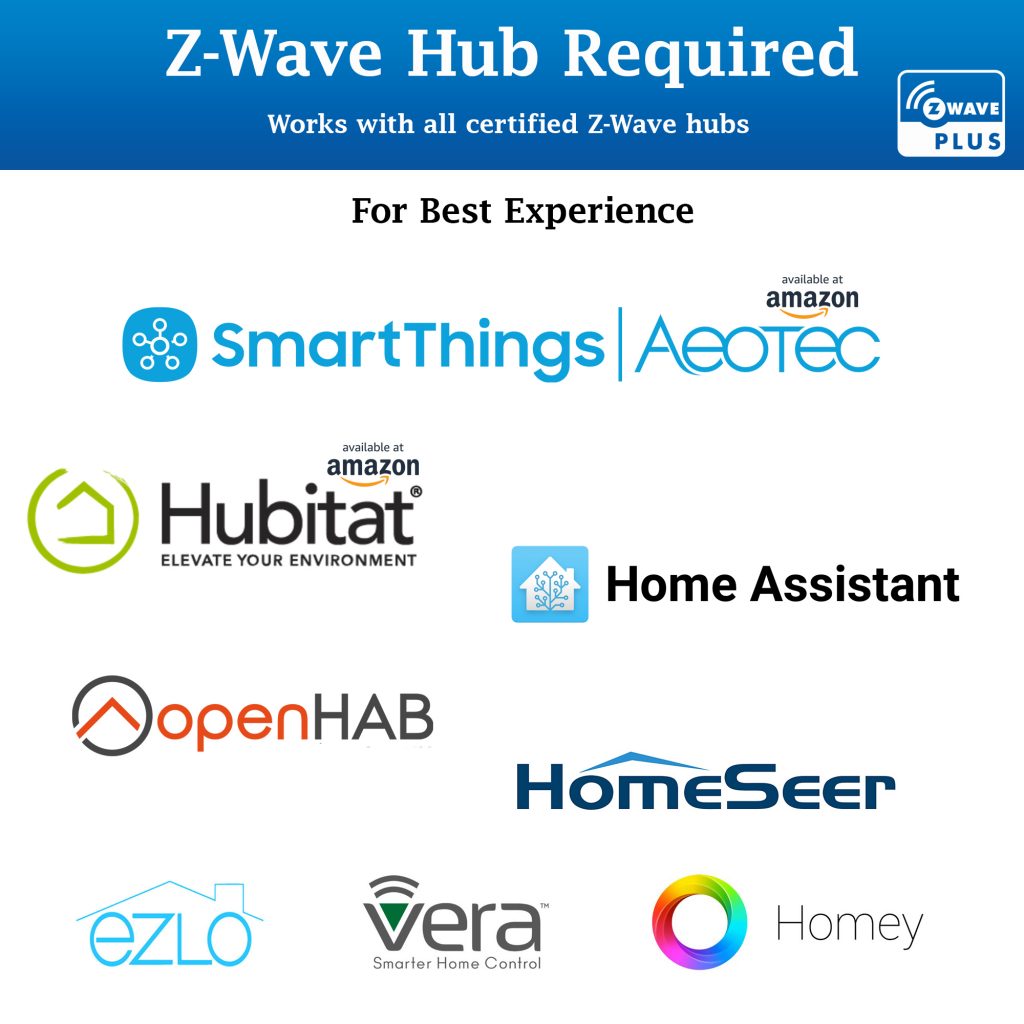
No, at this current time iblinds does not support Wink’s implementation of Generic Z-Wave Shade. We have made many attempts and are continuing to reach out to Wink to work with us to develop a solution. To date we have not received a response from Wink.
The largest window blinds we have tested with the iblinds device is 108” [Width] x 72″ [Height]
The smallest corded lift window blinds we have been able to fit the iblinds tilt motor into is an 18″ blind. You will need about 6″ free space in the headrail between the tilt drums to allow enough room. The iblinds device is 4.75″ long and it requires about another inch or so to allow for the plug-in connectors.nn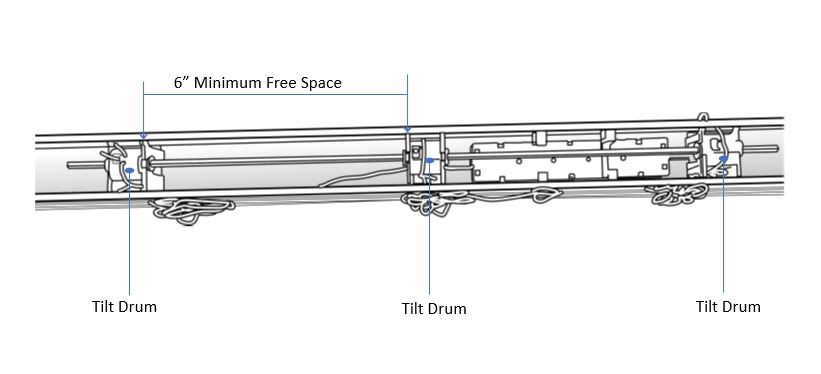
The iblinds kit is designed to automate most major brands of corded lift horizontal 2-2.5″ blinds, also known as Venetian blinds. The Kit is however compatible with some cordless lift horizontal 2-2.5″ blinds. Reference the checklist below to determine if your cordless lift blinds are compatible with iblinds.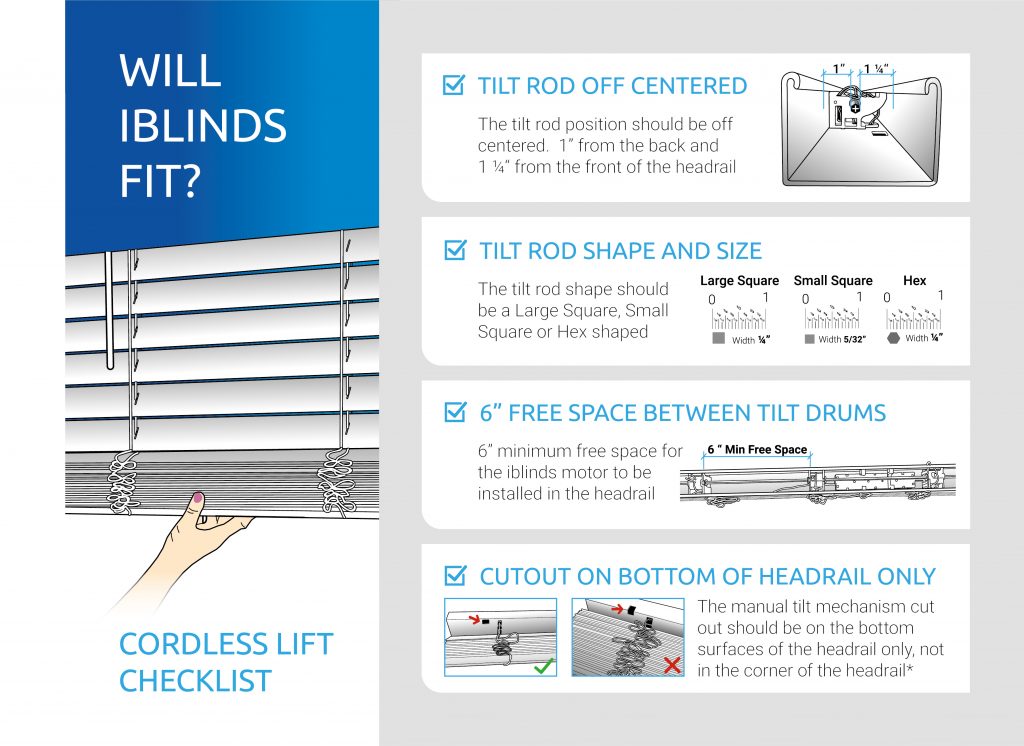
The iblinds kit is designed to automate MOST major brands of corded lift horizontal 2-2.5″ blinds, also known as Venetian blinds. The Kit is not compatible with mini blinds, vertical blinds or shutters. Reference the checklist below to determine if your corded lift blinds are compatible with iblinds. If you have cordless blinds, please check the cordless blinds FAQ.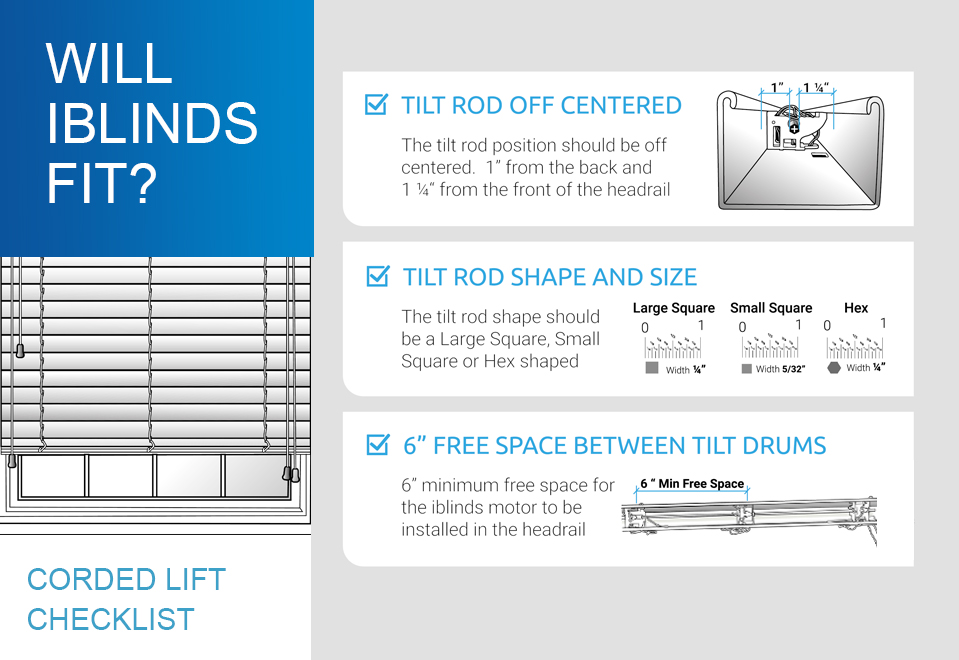
Features
Yes, for V3 and above. Simply press the charge adapter button once to open to the last open position, or close the blinds
V2 does not offer an option for manual control. We suggest using a Z-Wave remote or Voice Control via Alexa or Google Home in place of using manual control.
iblinds uses the Z-Wave smart home communication protocol which currently does not support HomeKit or Siri integration.
Integration with Alexa and Google Home requires a Z-Wave compatible smart home controller or hub.
At this time, iblinds will only tilt the blinds.
Installation
Motor
Approximately 4.75″ x 2.25″ x 1.5″
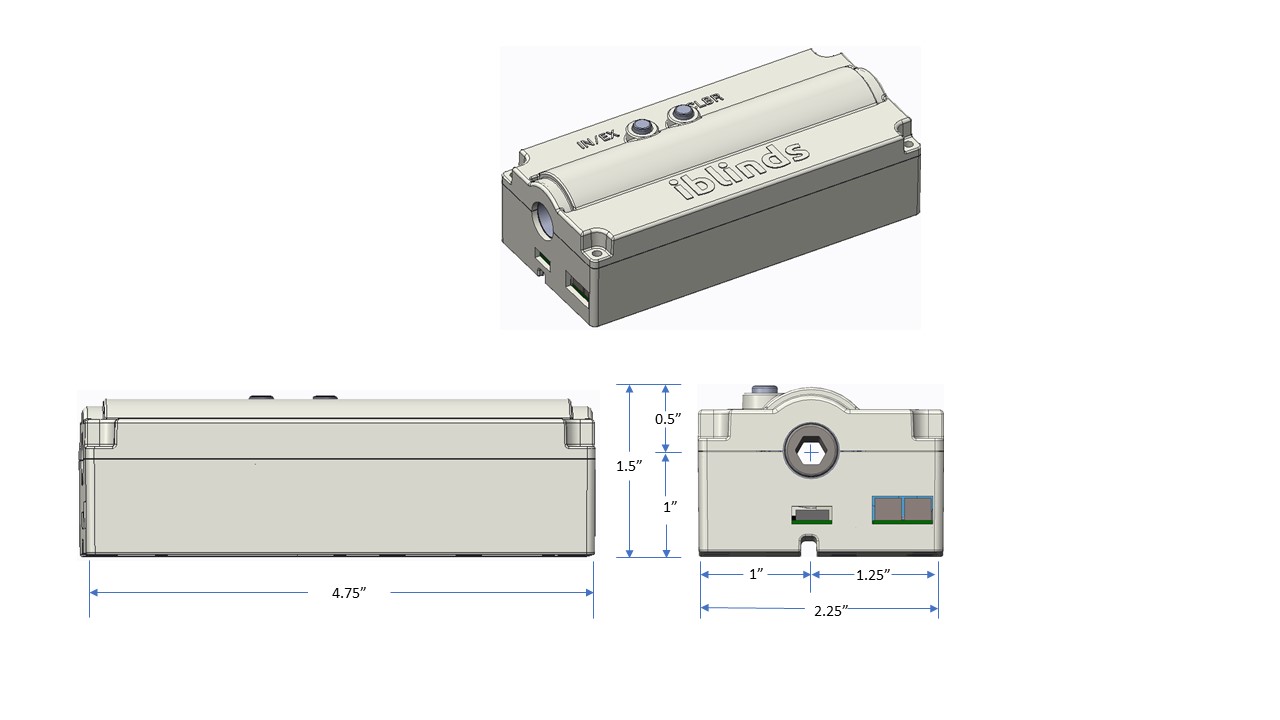
Solar Panel
– 12″ x 1.5″
Battery
Approximately 4″ x 1″ x .75″
Please refer to the User Guide
Please refer to the Quick Start Guide that came with your kit or view it below.
Solar Panel measurements – 12″ x 1.5″
Specs
5.5V, 230mA, 1.26W
Power Options
Power
USB – 5V DC 2A, Max
Lithium Cell Battery – 3.7V DC, 2A Max
Operating Temperature
32F – 122F
0C – 50C
Solar Panel
5.5V, 230mA, 1.26W
Special considerations have been made to provide battery safety
The battery is charged at .5A – 1A as a safety precaution. This slow rate is the reason it can take at least 6-8 hours to completely charge the battery.
Special precautions are taken to provide additional battery safety
- The battery case is made with a special “VO Class” fire retardant plastic (VO Class demonstration video – https://www.youtube.com/watch?v=4PR_dzBL8tk
- The battery has a protection circuit to protect against over charge and discharge.
Each iblinds motor needs a separate solar panel for battery charging.
The rechargeable battery needs periodic charging depending on the size of the window blinds and how often they are used. On average, the battery will last approximately 4-6 months. The solar panel eliminates the need for periodic charging. We highly recommend buying the solar panel for the best experience.
Z-Wave
It depends
Things to consider:
- Remote must support Z-Wave Beaming Technology OR have a device that does support beaming as a repeater to send the wake command to the iBlinds
- Setup Association on your Z-Wave hub.
iBlinds is a “Listening Sleeping Slave,” (LSS) to save battery and must be awakened before its use, so the remote must support Beaming Technology. If it doesn’t support Beaming then there must be a hub or repeater in your home nearby the iBlinds that is able to support Beaming in order to wake the iBlinds. Ensure that you have Z-Wave association setup in your Z-Wave hub.
To determine whether a remote control is “Beaming Capable,” you can visit the Z-Wave Alliance Certified product site and check the product Z-Wave Protocol Implementation Conformance Statement.
You can test the remote by temporarily disabling your internet after setup.
Here are some suggestions for remote controllers [The Aeotecs will need a beaming capable repeater to send the wake command to iBlinds]
Aeotec NanoMote Quad
Aeotec WallMote Quad
Other Certified Remotes
iblinds is a Z-Wave plus certified device and will work with Z-Wave enabled smart home controllers. Z-Wave certification ensures that all Z-Wave products work together with each other regardless of brand, including backward-compatibility between versions.nnNote: The iblinds device may default to a generic Z-Wave Switch, allowing the window blinds to exclusively open and close. When the controller manufacturer is using non-standard Z-wave processes, iblinds may have difficulty integrating.nnNote: At this current time iblinds does not support Wink’s implementation of Generic Z-Wave Shade and Wink does not allow iblinds to default to a generic Z-Wave Switch.
We currently support North American, Europe/CEPT, and Australian/New Zealand Frequencies.
Z-Wave regional frequencies. 